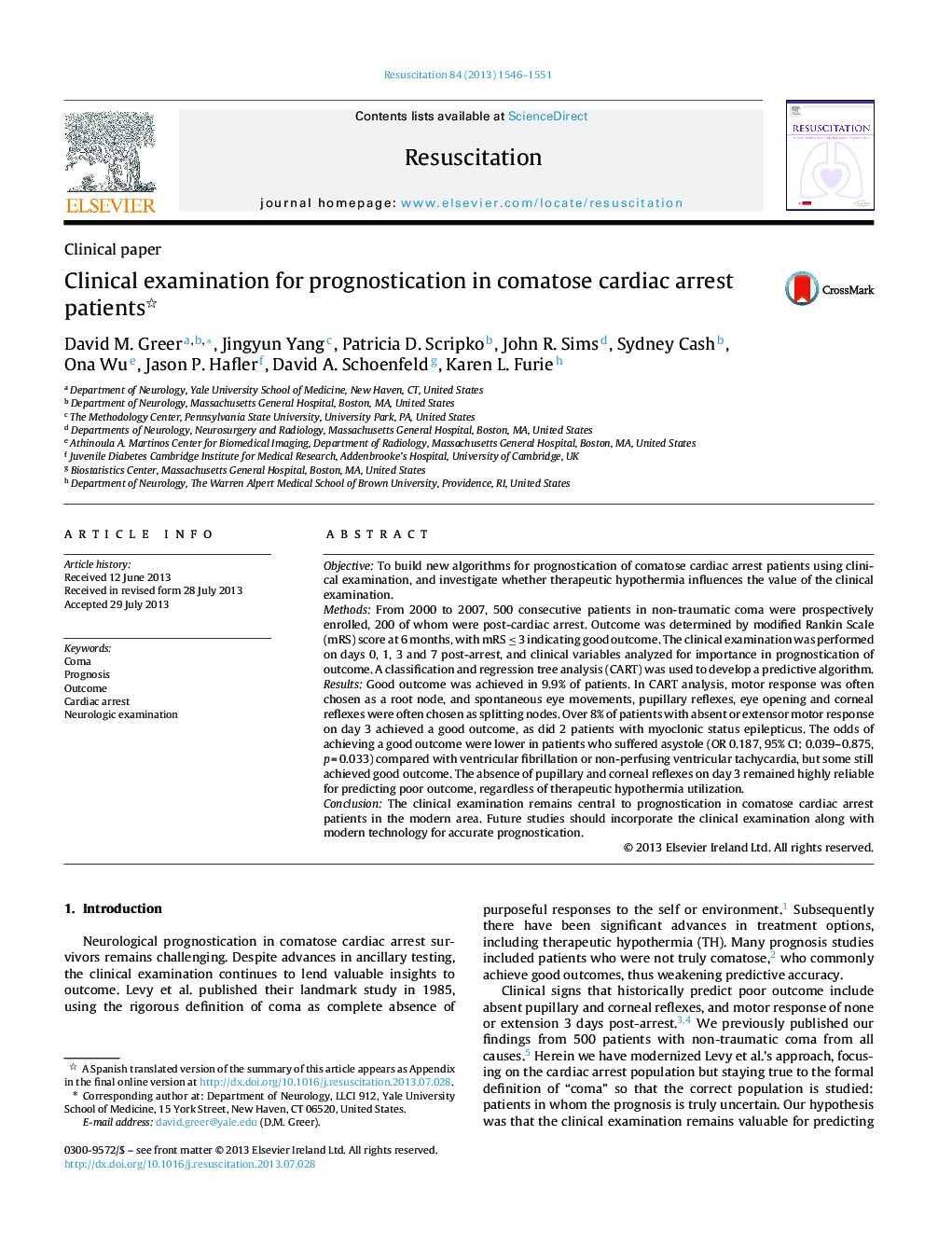| Article ID | Journal | Published Year | Pages | File Type |
|---|---|---|---|---|
| 5998973 | Resuscitation | 2013 | 6 Pages |
ObjectiveTo build new algorithms for prognostication of comatose cardiac arrest patients using clinical examination, and investigate whether therapeutic hypothermia influences the value of the clinical examination.MethodsFrom 2000 to 2007, 500 consecutive patients in non-traumatic coma were prospectively enrolled, 200 of whom were post-cardiac arrest. Outcome was determined by modified Rankin Scale (mRS) score at 6 months, with mRS â¤Â 3 indicating good outcome. The clinical examination was performed on days 0, 1, 3 and 7 post-arrest, and clinical variables analyzed for importance in prognostication of outcome. A classification and regression tree analysis (CART) was used to develop a predictive algorithm.ResultsGood outcome was achieved in 9.9% of patients. In CART analysis, motor response was often chosen as a root node, and spontaneous eye movements, pupillary reflexes, eye opening and corneal reflexes were often chosen as splitting nodes. Over 8% of patients with absent or extensor motor response on day 3 achieved a good outcome, as did 2 patients with myoclonic status epilepticus. The odds of achieving a good outcome were lower in patients who suffered asystole (OR 0.187, 95% CI: 0.039-0.875, p = 0.033) compared with ventricular fibrillation or non-perfusing ventricular tachycardia, but some still achieved good outcome. The absence of pupillary and corneal reflexes on day 3 remained highly reliable for predicting poor outcome, regardless of therapeutic hypothermia utilization.ConclusionThe clinical examination remains central to prognostication in comatose cardiac arrest patients in the modern area. Future studies should incorporate the clinical examination along with modern technology for accurate prognostication.
